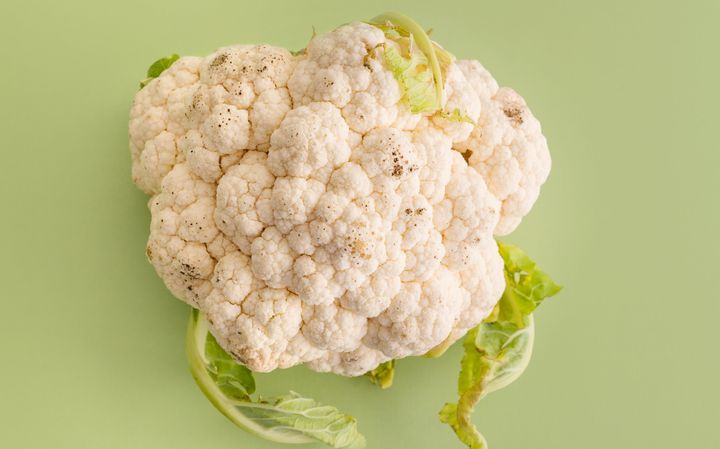
As a semi-regular consumer of cauliflower, I’ve always been a little puzzled when I open the fridge, take out a head of cauliflower I bought a few days ago, and find little dark spots all over it. These dark spots range from yellowish to brown and black, and, to be honest, I always thought those spots were mould.
Embarrassingly, I didn’t actually get rid of my cauliflower when I saw those spots pop up. Instead, I cut them off and cooked the cauliflower anyway — I had just bought it, and this always seemed to happen, so I tried to ignore it. A little mould wouldn’t kill me, right? But recently, I found out those spots aren’t mould at all. They’re the result of oxidation.
“The spots that you see on cauliflower are typically areas where the vegetable has started to age and oxidise, which can occur due to exposure to air and light,” explained Norah Clark, a chef and registered dietitian. “It’s essentially a natural process akin to how an apple turns brown after being cut open.”
So do those spots mean your cauliflower is going bad? Are they dangerous? Can you prevent them from occurring? And what are the signs that your cruciferous veggies aren’t in the best shape? Here’s what the experts say.
What the dark spots on your cauliflower actually mean (and when they can be dangerous).
Most people don’t exactly feel enthusiastic when they think about the brown spots that pop up on apple slices, but that doesn’t mean they won’t eat them. You can think about cauliflower spots in a similar way.
And yes, it’s perfectly safe to eat cauliflower with a handful of unattractive spots on it. “The oxidation process does not lead to the creation of harmful compounds and is a natural reaction between phenols and oxygen,” said Kelly Costa, a registered dietitian and health research specialist. “Thus, there are no safety concerns associated with consuming the cauliflower.”
With that in mind, are there times when spots on the cauliflower are problematic? Absolutely. “If the spots are small and the cauliflower otherwise smells and feels fresh (crisp, not slimy), it’s likely still good to eat,” Clark said. “Just cut the spots away before using. However, if the spots are widespread, the cauliflower has a bad smell, or the texture is slimy, these are indications that the vegetable may have gone bad and it’s best to discard it.”
In general, Clark noted, determining whether your cauliflower or other cruciferous vegetables have gone bad can be done through a mix of visual and sensory cues.
“Besides the visible spots, look for changes in colour, like yellowing,” Costa said. “Smell is a good indicator as well; fresh veggies should not have a strong, unpleasant odour. Lastly, texture can reveal a lot — fresh cauliflower should feel firm and crisp, not soft or slimy.”
While you’re not going to get sick (or even sacrifice flavour) with a few spots on your cauliflower, Clark does subscribe to the philosophy that if you’re “in doubt, throw it out.” It’s simply not worth it to risk you or your family members getting sick, so look out for the telltale signs that your cauliflower has gone bad, and throw it out (or compost it) if you spot any of them. This is especially important if you’re allergic to mould, as many people are.
How to keep your cauliflower fresh (and spot-free).
If you want to keep your cauliflower fresh for as long as possible, Costa said storing cauliflower in the refrigerator in an airtight container is key. “The low temperature and humidity of the refrigerator environment will slow down the oxidation process,” she said. “Additionally, don’t wash the cauliflower before storing it, as moisture can increase oxidation.”
Finally, she said, make sure to buy cauliflower with a bright white colour and minimal discolouration whenever possible. This ensures that you’re buying the very freshest cauliflower and that it will take longer to oxidise or go bad.
While spotted cauliflower might not be the most attractive look, experts agree there’s nothing dangerous about it unless the spots are very dark or widespread. So cut them off and roast it, make it into a pizza crust, or dip it in ranch dressing — as we all know, the sky’s the limit with this versatile veggie.